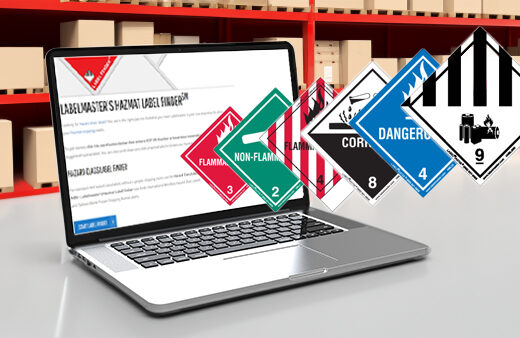According to Occupational Safety and Health Administration (OSHA), U.S. laboratories employ more than a half-million workers. There are many recognized hazards associated with the laboratory environment; therefore, both OSHA and industry have taken steps to guard workers from potential chemical exposure. Many individuals are already aware that OSHA implemented a major revision to the U.S.…
-
Introducing Greif Drums: The Smarter, Stronger, and More Sustainable Solution for Hazardous Material Storage
-
Embracing Sustainability in DG Packaging: A Path Forward
-
Have a hazmat question? Have a phone? Call our DG Regulations Hotline!
-
Label Finder Updates Include International Shipping Options
-
Want more large-format lithium battery packaging options? We’ve got good news.
Latest Posts
Supply Chain Issues Related to Hazardous Materials Cost Wal-Mart More Than $82 Million
A recent plea agreement by Wal-Mart Stores Inc. is a stark reminder of the fines and penalties retailers face if they improperly handle and transport hazardous materials. The U.S. Environmental Protection Agency (EPA) announced on Tuesday that Wal-Mart pled guilty in cases involving the illegal handling and disposing of hazardous materials at retail stores across…
White Paper: GHS Impact on U.S. Chemical Manufacturers – Regulatory Changes and Practical Guidance
Chemical manufacturers bear the brunt of changes brought about in OSHA’s 2012 Hazard Communication Standard. With the first deadline approaching, which requires employee training be completed by December 1, 2013, the meticulous work of classifying chemicals, compiling data for publication in the new safety data sheet format and changing labels is just beginning for U.S.…
Recent Modifications and Revisions to the GHS-Based Hazard Communication Rule
In March 2012, the Occupational Safety and Health Administration promulgated a major revision to the U.S. Hazard Communication Standard (HCS) in 29 CFR 1910.1200. In short, this rulemaking harmonized the HCS with the UN-based Globally Harmonized System of Classification and Labelling of Chemicals (GHS). The rule went into effect in May of last year. To…
First Compliance Date Looms for OSHA’s 2012 Hazard Communication Standard
The 2012 changes to the Hazard Communication Standard (HCS) of the Occupational Safety and Health Administration brought the United States into alignment with the Globally Harmonized System of Classification and Labelling of Chemicals (GHS). According to the final rule, the GHS/HCS compliance requirements will be phased in over a four-year period. The first compliance date,…
GHS: Learning the Ropes
Much of the “buzz” in the U.S. regulatory community this year, at least in hazard communication, has been about a three letter acronym that may still be a mystery to many: “GHS.” What does this acronym stand for, and how will it affect you and your company as it relates to hazard communication? One thing…
Summary of USPS Publication 52: Shipping Lithium Batteries
United States Parcel Service (USPS) published a notice in the Federal Register that describes revisions to USPS Publication 52, Hazardous Restricted, and Perishable Mail. These revisions closely align USPS requirements for shipping lithium cells and batteries with those found in both the U.S. D.O.T. and international regulations.
A.I.R. Shipper 2013 Addendum/Corrigendum Issued
Users of Labelmaster’s A.I.R. Shipper (Air International Regulations for Shippers of Dangerous Goods) should take note that the first Addendum/Corrigendum (or revision) of the regulations for 2013 has been released. A variety of sources are used for this revision; however, the primary source remains the regulations promulgated by the International Civil Aviation Organization (ICAO). A.I.R. Shipper presents…
To “E” or Not to “E”: That Remains the Question in Dangerous Goods Training
As advances in technology continue their march across the plains of the learning environment, the role of e-learning in dangerous goods training is still a source of heated debate. New electronic tools, systems and learning solutions are introduced regularly, but the jury is still out on their use and place in the field of dangerous…
Reminder: Upcoming Transitional Date for Basic Shipping Description Sequence
On December 29, 2006, the Pipeline and Hazardous Materials Safety Administration (PHMSA) published a final rule in the Federal Register harmonizing certain aspects of the U.S. Hazardous Materials Regulations (HMR) with the International Maritime Dangerous Goods Code, the International Civil Aviation Organization’s Technical Instructions for the Safe Transport of Dangerous Goods by Air, and the…












